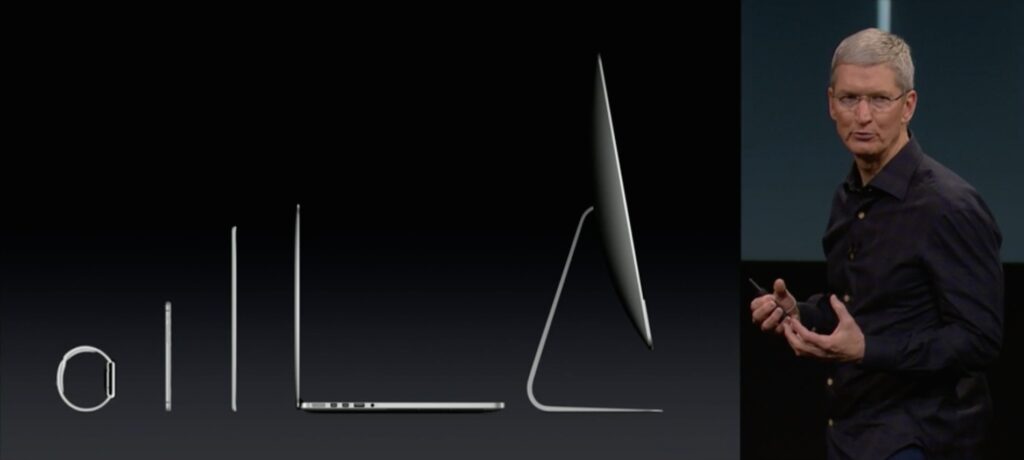We often talk about Apple as a company that does things a little differently when it comes to marketing. You know, that whole “reality distortion field” gets hauled out from time to time to talk about how Apple hooligans fall for the company’s emotional industrial complex as they line up to buy their 7th consecutive iPhone.
By comparison, Apple has a contrarian approach to the market. They sell primarily on function and secondarily on features. They focus messaging strictly on brand lift rather than that which lifts the sector. They limit their line width and depth to those products that offer core functionality and let the economy spring up around those products supporting fringe needs. That’s why we don’t see a waterproof iPhone, for example, and see a robust market for accessories that fill the waterproof need.
While that’s clear if you’ve been watching Apple for a while, it became so much more clear yesterday at the company’s iPad Air 2/Retina iMac announcement.
I find this image fascinating, not for what it presents, but for what it omits. This image made the presentation twice, reinforcing Apple’s core product line. But, what?
From right to left, we have the iMac, presumably the retina model, the engine in Apple’s consumer desktop line. Then comes the MacBook Pro Retina, the flagship of the company’s laptop line. Then, the iPad and iPhone, measuring sales in the multi-hundreds of millions of units around the world and propelling the company to riches since the iPhone launch in 2007.
Then we have oddities. The Apple Watch sits at the end of the line, a product largely shrouded in mystery, unreleased in a wearables market that can only graciously be described as confused based on current competition in the space. We have no reliable data on how this product is going to perform, and it targets segments that range from teens on the low end to the top 1% on the high, a segment spread wider than just about any other in Apple’s catalog.
Still, unreleased.
And whither the Mac Pro? The trashcan rocket ship positioned at the highest of the high-end power hogs — the editors and engineers looking to eke out every last cycle — is nowhere to be found on this lineup of Apple’s usual suspects.
This image is important because it represents in clearly what is important to Apple. It’s an example of the kind of focus long legendary at the company, the practice of saying 1,000 no’s to every yes. Even better, it represents a pure example of marketing actively developing on a global scale. Focus on the products that leverage the internal strengths of the organization in the development of them. Differentiate to satisfy the needs of the majority of potential users in a segment. Demonstrate those products satisfying those needs effectively and clearly across channels.
Apple’s communications success is less the result of some sort of magical hypnosis than it is the application of clear, pure, and unadulterated marketing skill embedded across the company. It’s often taught, though rarely applied. And that, as it happens, makes all the difference.






 Lots to report on that front, which I’ll certainly do at some length later. For now, I have to sing the praises of the
Lots to report on that front, which I’ll certainly do at some length later. For now, I have to sing the praises of the